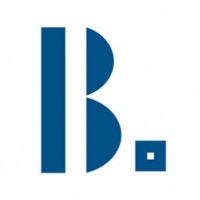Best Practices to Optimize Ecommerce Homepage and Convert
If you own a virtual shop you already know how much the
setting of the site is fundamental in terms of functionality and effectiveness.
Here's how to create an optimal homepage for your ecommerce
Imagine you are a user who lands on your site for the first
time. If the site convinces you and meets your expectations, continue browsing
and (perhaps) proceed with a purchase. If the site does not live up to
expectations, you leave it with a non-positive impression.
Do you know how long it takes people to make that choice?
About 50 milliseconds - a blink of an eye. This is the time you have to turn
the casual user into a potential lead, and the ecommerce homepage is the trump
card to grow your conversion rate. Let's see why and above all how to fully
exploit its potential.
Effective Ecommerce Homepage: Why Does It Matter So Much?
1. Corporate brand
2. Navigation menu
3. Ecommerce homepage design
4. CTA
5. Reviews
6. Contact information
Conclusions on how to optimize an ecommerce starting from
the homepage
Effective Ecommerce Homepage: Why Does It Matter So Much?
The ecommerce homepage is the online equivalent of a shop
window: it allows you to entice the potential buyer to 'go inside' for a deeper
look and, why not, for a purchase.
In ecommerce, the homepage serves to involve the user , so
that they can deepen their knowledge of the brand, easily browse the product
catalog and get a good enough opinion from it that they add your site to their
favorites.
In most cases, a few 'tweaks' to the homepage are enough to
make it performant and able to significantly increase conversions . Regardless
of your conversion goal - signing up for a newsletter, selling a service,
downloading a podcast - it all starts from the homepage.
To implement the best strategy, the most effective way is to
study a user 's navigation and purchase process with the ultimate goal of
improving the user experience on ecommerce . You will have to offer an easy and
engaging experience, through intuitive navigation and attractive graphics,
keeping in mind one fact: 70% of online businesses fail due to bad usability.
Here are 6 things to look out for on the ecommerce
homepage.
1. Corporate brand
' Make yourself recognizable ' is the main mantra in
branding and its practical application also goes from the front page of your
website. Company
logo and slogan are the traits that characterize your business and, of
course, they cannot be missing on the homepage.
Position and graphics are essential to make the logo stand
out and it must emerge in a 'natural' way without being excessive. Equally
important is the concept of consistency : users familiar with your brand expect
the site to be in line with the style and values of the company.
Finally, don't forget the claim and / or slogan that give
voice to your business. Also in this case the position must be strategic and if
the writing is accompanied by the logo, it must be legible and clear through a
skilful use of colors and graphics.
2. Navigation menu
Looking for a tool that gives users a reason to stay longer
on your website? The navigation menu is the answer. To make it functional, the
items must be understandable: using standard titles is not a limitation to
creativity, but rather a facilitation for surfers . The items " Catalog
", " Our products ", " Shop " are what you expect in
an ecommerce site and yours cannot be an exception. While titles such as "
Who we are ", with the company history and " Privacy Policy ",
for the management of personal data are transversal .
The navigation bar, to be usable, must be in a prominent
position . While as regards the type, for example fixed during the scroll, it
is advisable to evaluate according to the design set. Please advise your
webmaster before choosing. If you decide to opt for the sticky menu solution ,
or blocked even in the scroll phase, make sure that some elements are always
present, such as the logo and possibly the Call To Action .
The "Search" function on the site is not an option
: the internal search engine is the most immediate means that customers have to
find the product / service they need. It is estimated that about 50% of users
do not proceed with the navigation because they cannot browse the catalog and
find what they are looking for.
3. Ecommerce homepage design
94% of negative user feedbacks refer to the design in terms
of responsiveness and navigability . A fact to reflect on, don't you think?
After all, it is not just a question of visual impact, but
also of practical consequences in the usability of the site. Being able to be
essential, focusing on quality and practicality, pays from the performance
point of view.
But " less is more " is not as easy to implement
as it seems: if you manage an ecommerce you want to put your cards on the table
and immediately show users all the extraordinary opportunities on your site.
Well, by doing so you risk confusing your visitors.
Arranging the elements that users expect , exactly in their place, matching
incisive texts and quality photos: here are the steps to capture the attention
of visitors, guiding them without interruption in the navigation of the site.
The use of 'negative space' also plays an important role in
this dynamic , the white that lightens the fullness and allows the message of
the contents to be highlighted.
4. CTA
The Call To Action (CTA) depends on the goal you have
decided to convert. In any case, it cannot be missing on the homepage of your
ecommerce. After all, the user expects to be involved : if he finds the site he
likes, he will want to be informed about the latest news through the
newsletter, or he will be happy to register to take advantage of any sales.
Regardless of the type of call to action, the basic rule is:
keep the low profile , which means that the CTA will have to stand out from the
elements present in HP, without 'being shouted'. In this regard, investigations
have been made regarding the Call To Action on the homepage and a couple of
interesting indications have come out on how to achieve it:
Colors : red and orange are the most used colors, but
the determining factor for success is finding a graphic that can 'detach' the
CTA button from the background.
Standard text : in the Call To Action it is important
to use terms that give an immediate answer to questions such as “ How do I?
"," May I know? ", That's why CTA buttons often have keywords like"
Buy Now "," Learn More "," Sign Up for Special Offers
".
Ecommerce homepage CTA examples
If you are a professional and sell services, your ideal CTA
is " Request a free quote " which allows you to increase your
customer database and create profiled lists.
If your shop is an online wine shop , you could invite users
to subscribe to the newsletter in which you present the various wines of your
'cellar' and show the possible combinations. Visitors may be tempted to buy
wines thanks to the content you offer. In this case the CTA can be very
creative, for example “ Sign up for our free sommelier course ”.
If you have a physically localized activity , however, the
CTA must encourage the visitor to come and visit you, in the case of a
restaurant " Reserve a table immediately ", or " Choose your
menu ", in the case of a " Fixed an appointment "and so on.
5. Reviews
Reviews build a sense of trust in your business and help
build a good opinion in whoever is visiting the site.
We are talking about testimonials, true and authentic, of
those who have already tested your service, or have already bought your
products: their voice and their faces (if you decide to use photos, remember to
ask for the release for the image processing, ed ) are a quality mark in the
eyes of new users. In some cases, for example for restaurant businesses, it is
possible to link the site to reviews from third parties such as TripAdvisor.
6. Contact information
Last but not least, remember to be found in every moment of
the navigation. On the homepage of the ecommerce and of each website there are,
often at the footer , the contact information with email address and telephone
number / Whatsapp .
Just as it is a good habit to put buttons in the header that
refer to company social
accounts (Facebook, Instagram, Pinterest, Linkedin etc.).
In other words, every useful tool to cancel the distance
between you and your user must be clearly visible and this is the reason that
explains why the " Contact Form " never goes out of style for those
looking for information on products / services.
Conclusions on how to optimize an ecommerce starting from
the homepage
As you will have understood, the motto to optimize your
ecommerce homepage and increase the conversion rate is " User First
". The user must be enabled to have a facilitated and engaging experience,
through the correct design settings.
Which means putting both professionalism and creativity into
play: only in this way will you be able to effectively highlight your products
and at the same time brand your HP in a unique way with original and quality
content.
Post Your Ad Here


Comments